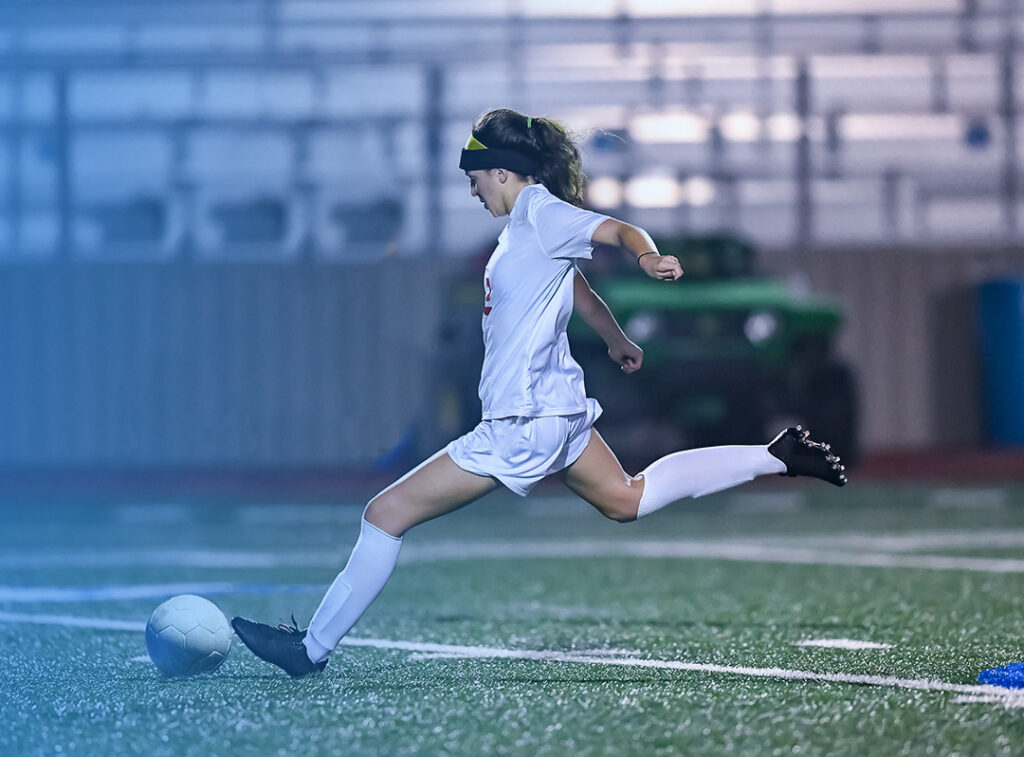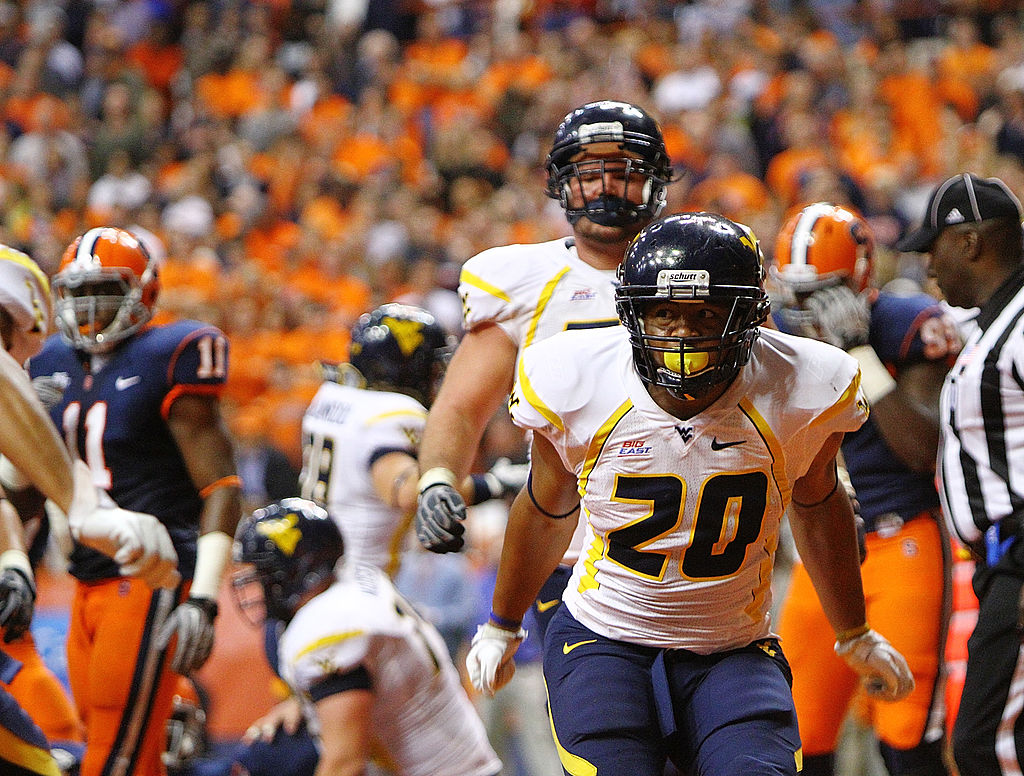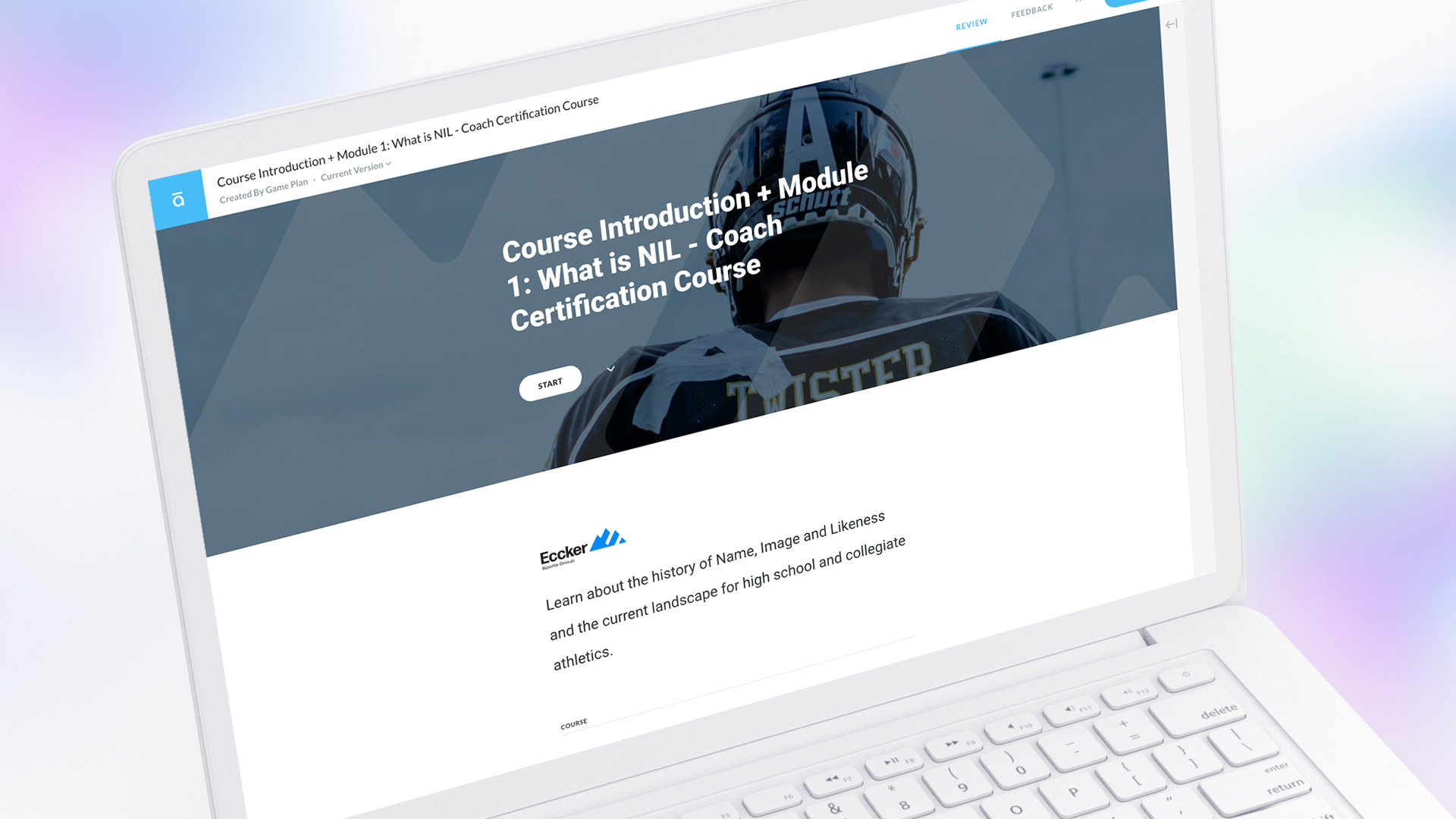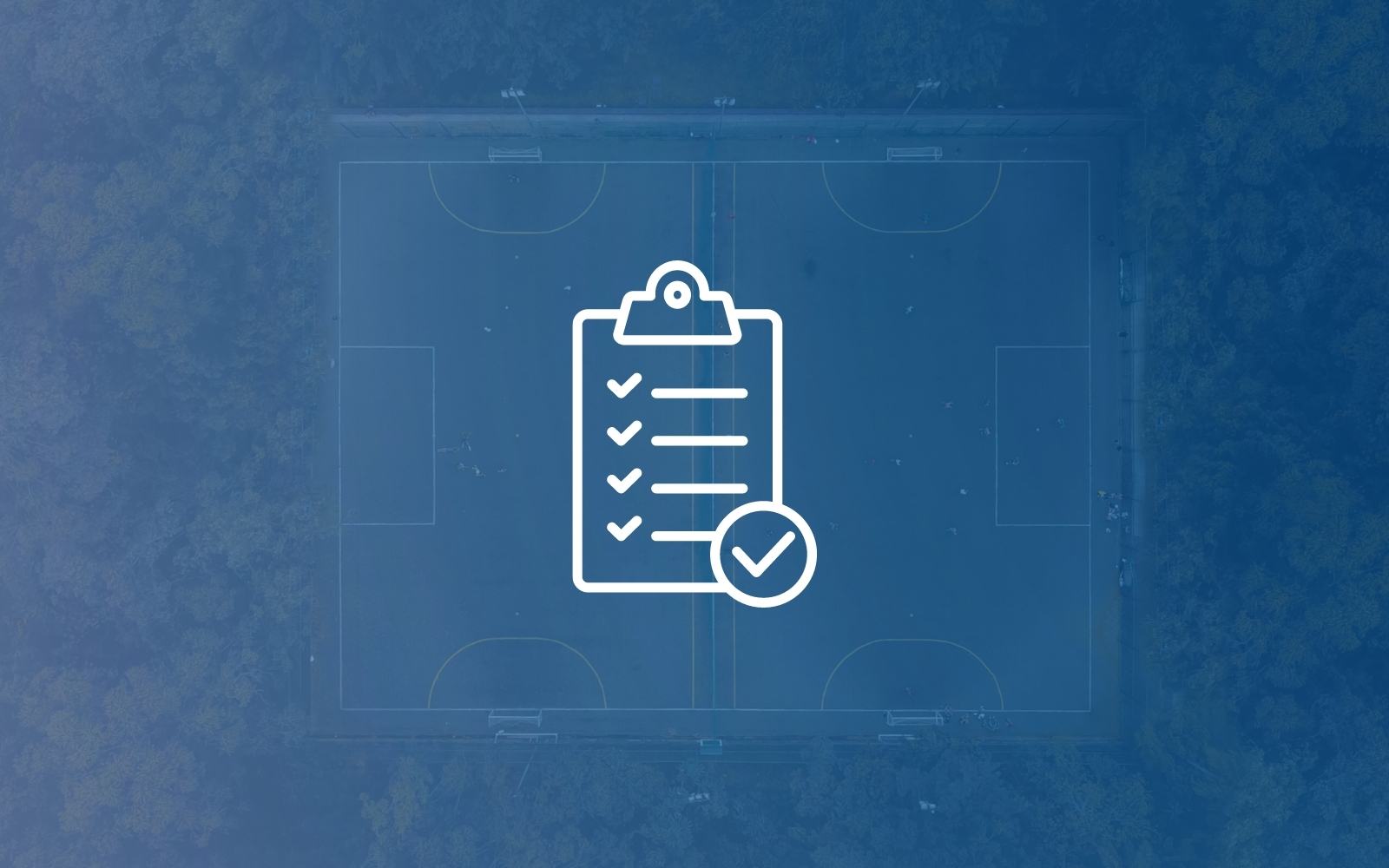The ultimate college and high school NIL timeline

Keeping up with all the developments of name, image and likeness (NIL) over the last year must have felt like a monumental task, and trust us, it was for us too! Unprecedented changes at the college and high school level flood the news feed every day as student-athletes maximize their newfound opportunities to monetize their NIL.
The reality is that conversations surrounding NIL started far before July 1, 2021, when the NCAA Interim NIL Policy and numerous state NIL laws took effect, and headlines will continue to emerge in the coming years.
This timeline will help you track NIL developments, including how it came to be and where it will go from here.
1905
The Intercollegiate Athletic Association (IAA) was founded to regulate collegiate sports and athlete safety. Its original constitution stood on the principles of amateurism and fair play, including prohibiting athletes from making money for competing in an intercollegiate sport. Upholding this rule was difficult at the time since the association did not have much traction with colleges yet.
1910
The IAA was renamed the National Collegiate Athletic Association, or NCAA, to better align with its aspiration of supporting colleges across the country.
1948
The NCAA adopted the “Sanity Code,” principles that covered financial aid, recruitment, and academic standards. The code only allowed students to receive institutionally supported need-based aid and to hold jobs.
While these principles were intended to ensure amateurism in college sports, critics believed that this code placed severe limitations on the benefits athletes could receive. Member schools wanted to provide aid based on athletic ability.
The NCAA struggled to uphold penalties for institutions that violated the code and three years later (1951) it was repealed.
1956
The NCAA began allowing athletes to receive athletic scholarships without regard for their academics or financial hardships.
1975
The NCAA updated its regulations limiting scholarships to tuition, books, and board.
2009
Former UCLA basketball standout, Ed O’Bannon, who helped lead his team to a championship in 1995, sued the NCAA and the Collegiate Licensing Company on antitrust violations. He claimed that the EA Sports game NCAA Basketball ‘09, used his likeness without his consent and he was not compensated for it.
2014
A district court overseeing the O’Bannon vs. NCAA lawsuit upheld O’Bannon’s argument, stating the NCAA’s amateurism rules were an unlawful restraint on trade. As a result, the NCAA increased the grant-in-aid limit to the full cost of attending school and up to $5,000/year in compensation.

2015
The NCAA appealed the ruling in its lawsuit with O’Bannon, stating its restrictions had procompetitive benefits and helped maintain its core principle of amateurism. The appeals court disagreed and upheld the original ruling, except the $5,000 compensation would be deferred each year and held in a trust until athletes left college.
2016
O’Bannon’s lawyers appealed the case to the Supreme Court, which declined to review it. This brought O’Bannon’s case to an end, but escalated the conversation about student-athlete NIL forward.
March 2019
A few years after the O’Bannon lawsuit, a district court heard the complaints from a group of players, including Shawne Alston, regarding athlete compensation restrictions (Alston vs NCAA). The court ruled in favor of Alston and the other players, stating that the NCAA’s restrictions on education-related benefits violated antitrust laws. The NCAA would appeal this case on a future date.
Congressional lawmakers introduced their first federal NIL bill. It would not make any headway at the federal level.
Sept. 2019
California became the first state to pass NIL legislation, “Fair Pay to Play Act,” prohibiting institutions from punishing athletes who earn NIL compensation. This opened the floodgates in the coming months for other states to pass similar legislation.
Oct. 2019
Recognizing it needed to update its NIL regulations, the NCAA Board of Governors directed all three divisions to create “flexibility” surrounding name, image, and likeness by Jan. 2021.
Dec. 2019
The NCAA asked Congress to create uniform NIL regulations to avoid inconsistencies and inequities among states, particularly for recruiting.
March 2020
Colorado passes NIL legislation to take effect on Jan. 1, 2023. This date was later changed to July 1, 2021, to align with when legislation in other states would take effect.
June 2020
Florida passed a collegiate NIL law to take effect July 1, 2021, expediting the timeline that the NCAA and lawmakers had to come up with a uniform solution.
May 2020
The NCAA loses its appeal in the NCAA v. Alston antitrust lawsuit. This was another big blow to the association who was fighting to maintain its core principle of amateurism.
July 2020
Nebraska passed a new NIL policy for collegiate athletes to take effect July 1, 2023.
NCAA President Mark Emmert returned to Capitol Hill pleading with federal lawmakers to address uniform NIL legislation. Several members requested that the NCAA broaden its scope of reform efforts before they would consider federal help.
Sept. 2020
New Jersey passed a collegiate NIL policy that would take effect on Sept. 2025.
All three NCAA divisions released their initial legislative proposals to re-envision their NIL policies.
Oct. 2020
The National Association of Intercollegiate Athletics (NAIA) passed a historic NIL policy, becoming the first collegiate association to permit student-athletes to monetize their NIL.
Dec. 2020
The Supreme Court agreed to hear the NCAA’s appeal in its antitrust lawsuit (NCAA vs Alston et al). The NCAA defended that its amateurism principles and compensation limitations protected its academic mission and the preservation of college sports.
Michigan passed its collegiate NIL policy taking effect on Dec. 31, 2022.
Jan. 2021
The NCAA’s discussion surrounding NIL regulations at the NCAA convention was tabled due to a letter from the U.S. Department of Justice, Antitrust Division, that expressed concerns over the NCAA’s violation of antitrust laws.
March 2021
Arizona passed its collegiate NIL law taking effect on July 23, 2021.
The Supreme Court heard arguments in NCAA vs. Alston et al.
April 2021
Alabama (effective 7/1/21), Arkansas (eff. 1/1/22), Mississippi (eff. 7/1/21), Montana (eff. 6/1/23), and New Mexico (eff. 7/1/21) passed NIL laws for collegiate athletes. Mississippi became the first state with an NIL law specifically banning high school athletes from monetizing their NIL.
May 2021
Georgia (eff. 7/1/21), Maryland (eff. 7/1/23), Oklahoma (7/1/23), and South Carolina (7/1/22) passed NIL laws.
June 2021
Connecticut (eff. 7/1/21), Illinois (eff. 7/1/21), Kentucky (7/1/21- executive order), Nevada (1/1/22), Ohio (7/1/21), Oregon (7/1/21), Pennsylvania (6/30/21), Texas (7/1/21), Kentucky (executive order eff. 7/1/21) passed NIL laws for collegiate athletes. Texas and Illinois’ bill language explicitly prohibits high school athletes from monetizing their NIL.
June 21: The Supreme Court rejects the NCAA’s appeal of its antitrust lawsuit, finalizing the decision that the NCAA could not limit education-related benefits (including non-cash compensation) that colleges could offer student-athletes. While this case did not directly give student-athletes the right to profit from their name, image and likeness, it made heavy implications that those changes were coming quickly around the corner and there was no slowing it down.

June 30: The NCAA adopted an interim NIL policy allowing all incoming and current college athletes to receive compensation for their name, image and likeness. The temporary policy will remain in place until federal legislation or new NCAA rules are adopted.
The National Junior College Athletic Association (NJCAA) Board of Regents approved a new bylaw to allow student-athletes to monetize their NIL.
July 2021
Louisiana (eff. 7/1/21), Missouri (eff. 8/28/21), North Carolina (eff. 7/2/21) passed NIL laws.
July 1: The NCAA interim policy and multiple state laws take effect. The Wild West of NIL begins as multiple NIL deals start hitting the table.
July 7: The executive director of the National Federation of State High School Associations (NFHS) released a statement commenting that the NCAA’s change does not affect high school athletes. Its rules continue to prohibit athletes “from receiving money connected to wearing their school uniform.” This has not stopped numerous high school state athletic associations or state leaders from making changes to their NIL policies.
Aug. 2021
Quinn Ewers, a five-star quarterback from Texas, makes waves by announcing he would forgo his senior season of high school to enroll at Ohio State University, due in part, to his inability to capitalize on more than $1 million in NIL compensation. This highlighted a major shift in the high school NIL market to come.
California Interscholastic Federation (CIF), which governs high school athletics in California, clarified that its NIL law already grants high school athletes their NIL rights.
Oct. 2021
New York Public High School Athletic Association (NYPHSAA) approved revisions to its amateurism rules allowing high school athletes to monetize their NIL. It became the second high school association to expressly allow NIL at this level, behind California.
Nov. 2021
New Jersey State Interscholastic Athletic Association (NJSIAA) approved amendments to its bylaws permitting high school athletes to monetize their NIL, with exceptions. It would take effect at the beginning of 2022.
Kansas State High School Activities Association (KSHSAA) provides clarification to its bylaws which state that high school student-athletes are permitted to monetize their NIL, provided there is no team or school affiliation.
Dec. 2021
Alaska School Activities Association (ASAA) approved amendments to its bylaws allowing high school athletes to monetize their NIL, provided there is no team or school affiliation.
Nebraska School Activities Association (NSAA) approved amendments to its bylaws clarifying NIL is permitted for its high school student-athletes, so long as there is no team or school affiliation.
Jan. 2022
High school and college athletes in Florida files a class-action lawsuit against the Florida High School Athletic Association (FHSAA) and NCAA. The lawsuit claimed these associations were exploiting student-athletes and violating Florida antitrust law by not allowing the athletes to receive benefits for their NIL.
Representatives from campuses and conferences in all three divisions of the NCAA approved a new constitution at the NCAA Convention. The new document provides significant authority to the three divisions to reorganize and restructure their guidelines to better align with the association’s new vision.
Utah High School Activities Association approved an update to its bylaws permitting NIL for its student-athletes, so long as there is no affiliation with the team or school.
Feb. 2022
Alabama lawmakers vote to repeal its current NIL law over concerns that the law placed greater restrictions on student-athletes compared to the NCAA Interim NIL Policy.
Maryland lawmakers introduced a bill that would permit high school athletes to monetize their NIL, joining the short list of states that have addressed high school NIL in their legislation. While the bill is in its early stages, if passed, it would take effect on July 1, 2023.
California lawmakers introduced Senate Bill 1401, the College Athlete Race and Gender Equity Act, which would require California schools to share 50% of annual revenues in revenue-making sports with the athletes. A student-athlete would have access to this money through a degree completion fund of up to twenty-five thousand dollars ($25,000) per academic year.
March 2022
Kentucky enacts an NIL law for college athletes, replacing its executive order passed in 2021.
The NCPA files a civil rights complaint with the Department of Education’s Office for Civil Rights stating that NCAA Division I schools violate the civil rights of black students by colluding to cap compensation. This comes a month after the association also filed unfair labor practic charges with the National Labor Relations Board against the NCAA an multiple colleges/ conferences, with the goal of getting athletes classified as institution employees.
A five-star recruit in the Class of 2023 signs an NIL deal worth approx. $8 million, becoming the highest NIL deal to date.
April 2022
April 1: Louisiana High School Athletic Association (LHSAA) releases a positioning statement clarifying that its bylaws permit NIL activities for high school student-athletes.
That same week, the association approved a state-wide partnership with Eccker Sports to provide educational services and resources to help high school leadership and students navigate the challenges that NIL contracts are bringing to high school sports.

April 18: Mississippi amended its NIL legislation loosening some of the state’s NIL restrictions, including removing language prohibiting student-athletes from entering into a NIL agreement prior to their enrollment at a post-secondary institution, allowing college institutions to facilitate NIL opportunities for student-athletes interested in engaging in agreements with third parties, and requiring that contracts between an agency and a student-athlete have a disclaimer.
April 20: Tennessee lawmakers amended the state’s NIL law to provide collegiate institutions and collectives more flexibility in supporting student-athlete NIL.
April 21: During the Colorado High School Activities Association’s 2022 Legislative Council meeting, the administration voted to amend its bylaws permitting high school student-athletes in Colorado to monetize their NIL, so long as there is no affiliation with a CHSAA member school.
May 2022
May 1: Tennessee Football Coaches Association partners with Eccker Sports to make NIL educational services available to all high schools throughout the state.
May 9: NCAA Division I Board of Directors updates guidance on NIL to crack down on potential pay-for-play activity. The Board clarified that boosters engaged in “collectives” that are meant to provide NIL opportunities for athletes can not be used as inducements for prospective high school recruits or college transfers.
May 12: Missouri legislature passes amendment to NIL bill giving college coaches and university employees a more active role in their student-athletes endorsement opportunities. It awaits the governor’s signature.
May 17: Alyssa and Gisele Thompson Sign Nike’s First High School NIL Deal
May 17: After months of conversation, the OHSAA turns down a proposal that would have allowed high school athletes to participate in NIL. Principals across the state determined the outcome of this vote, with it failing by a margin of 538 to 254.
May 20: Illinois lawmakers amend NIL law removing the prohibition of schools from directly or indirectly arranging for third parties to provide compensation to a student-athlete.
May 23: The Texas High School Coaches Association partners with Eccker Sports to provide NIL education to coaches and administrators in high schools across Texas.
***We will consistently update this timeline to ensure the high school community stays informed on the latest NIL developments.


